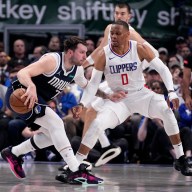So, what’ll it be? Steak or salad? For the majority of men, when it boils down to a meal of fatty flesh or fresh leaves, such a choice doesn’t require much thought.
But the boys aren’t to be blamed for their less-than-nutritious food choices, says Toronto-based Harvey Brooker. He’s the author of It’s Different for Men, a male-specific guide to weight loss, who believes the chief difference between sexes when considering nutrition is that men don’t understand what they eat, simply because they’ve never had to.
“Whatever’s been served to them, they’ve eaten,” he says. “Their mothers, wives and people in restaurants served them. They don’t know or often even realize the things they’re eating are so full of fat and nutritionless.”
Edible ignorance, paired with long-held notions of “male portions” (we’re looking at you Hungry-Man) contribute to the perpetuated disinterest in what men put into their bodies, says Brooker. And with 65 per cent of Canadian males over age 18 falling into the categories “overweight” and “obese” (compared to 54 per cent of women) in the most recent Canadian Community Health Survey on nutrition, it’s a feasible philosophy.
However, men can lose the stereotype, and the weight, but Brooker says they must be motivated, and willing to pursue education to learn about healthy foods and activities. “Most men don’t get that kind of training or are aware they even need it,” he says.
To start, Brooker suggests creating a journal of every food you consume. “You have to be aware of what you’re eating,” he says. “A guy will go into a restaurant and order a caesar salad and won’t understand it’s probably 80 calories of lettuce leaves and 1,800 calories worth of fat. Today, it’s real easy to buy a calorie book or go online to one of many calorie counting websites that will help you with this.”
Rethinking food isn’t the only change men need make in order for their bodies to. Brooker says they also need to understand what really constitutes exercise. “The type of exercise guys often do will be some start-and-stop exercises that might seem, on the surface, to give them a good workout. But it often isn’t frequent.” That means just joining a gym or playing social sports won’t cut it, he says. “Golfers often don’t get much of a workout. They sit on a cart.”
Although it can be difficult to make such drastic changes to physical activity, Brooker says the wellness acquired permeates every aspect of life, not just the body.
“Most men get themselves into this funk, where they almost believe there’s some predestiny for them to be an overweight, unhealthy and unhappy guy,” he says. “You can, in fact, bail yourself out of this and do what’s necessary to give yourself a healthier future.”
















